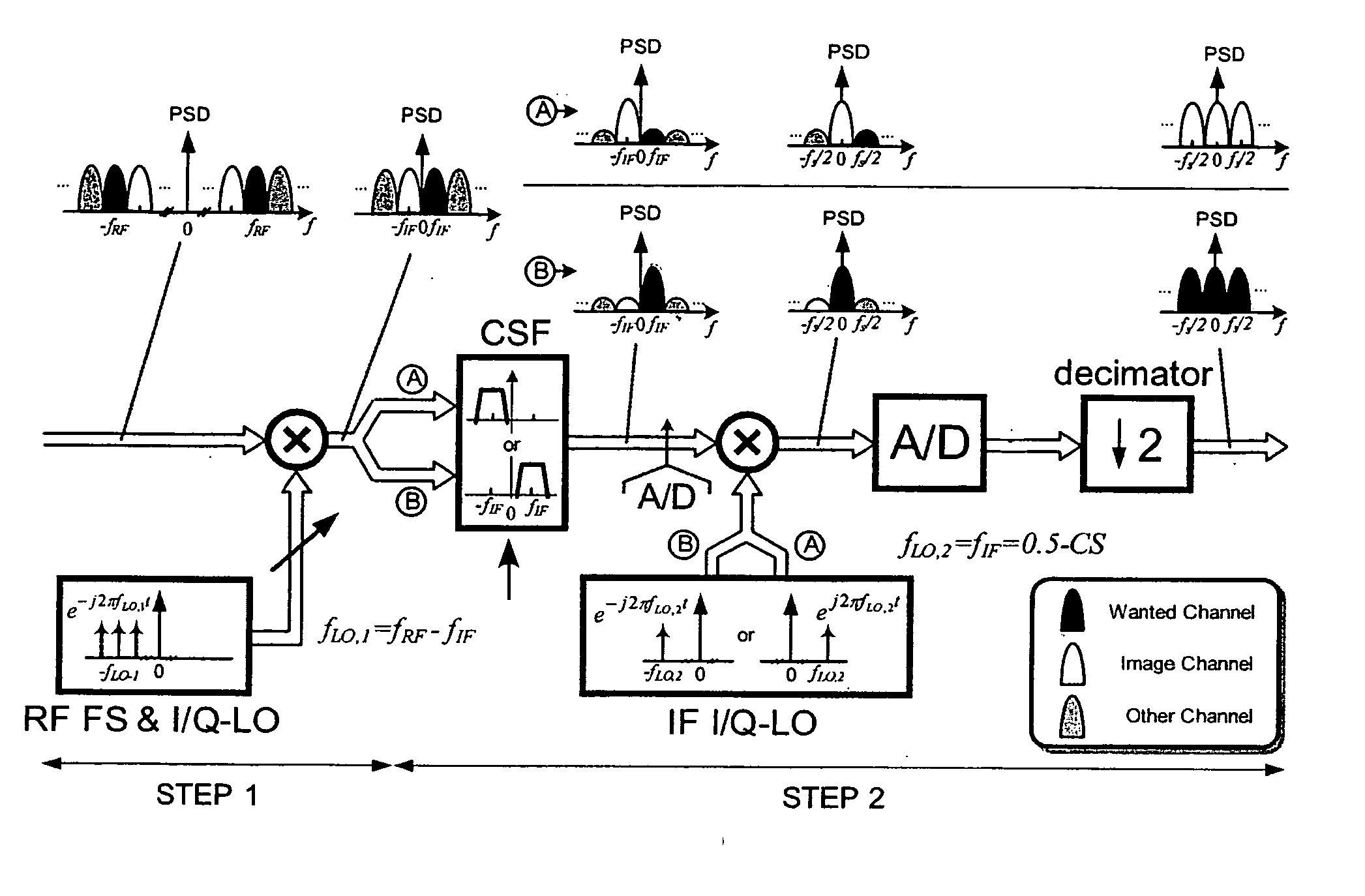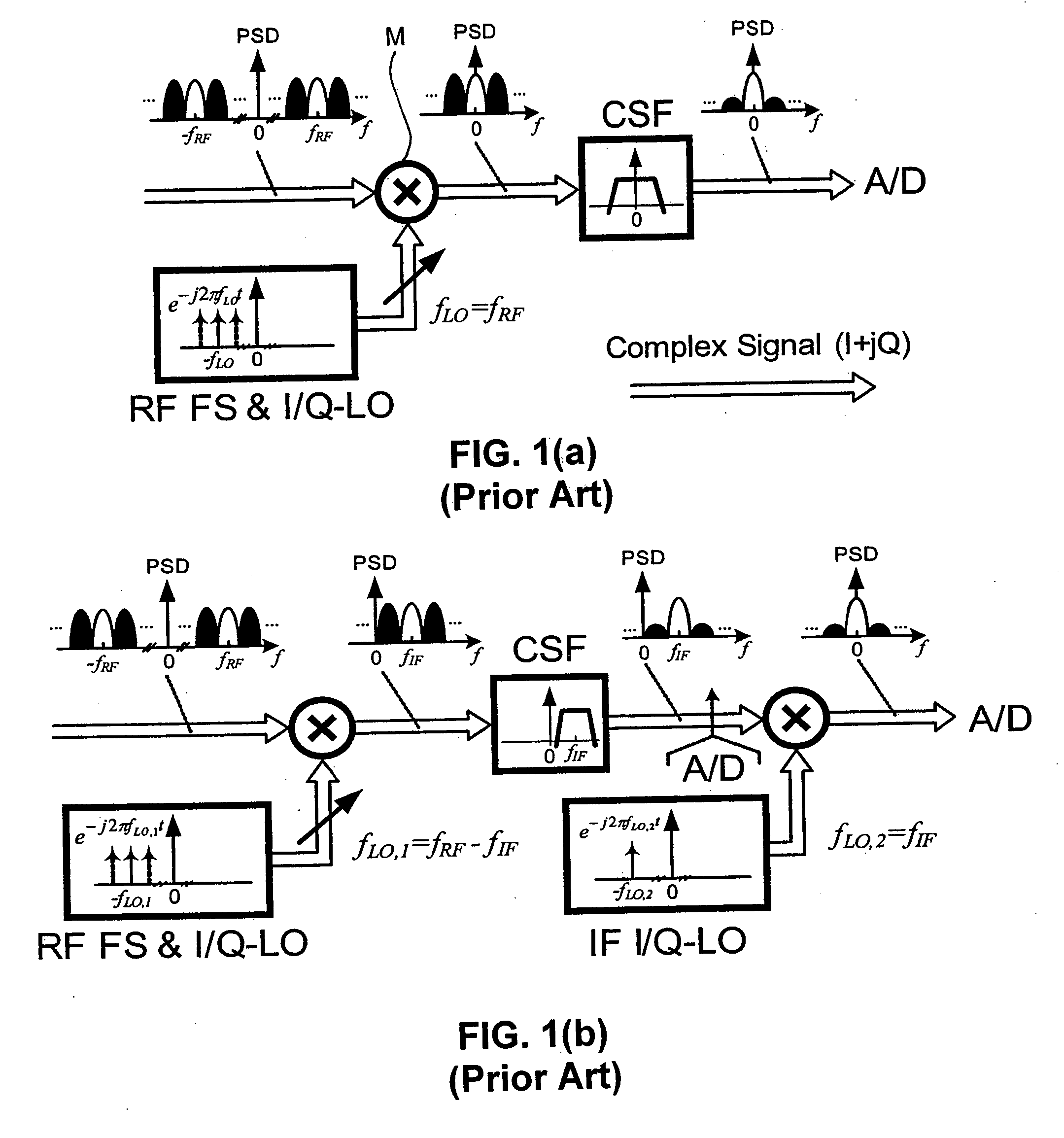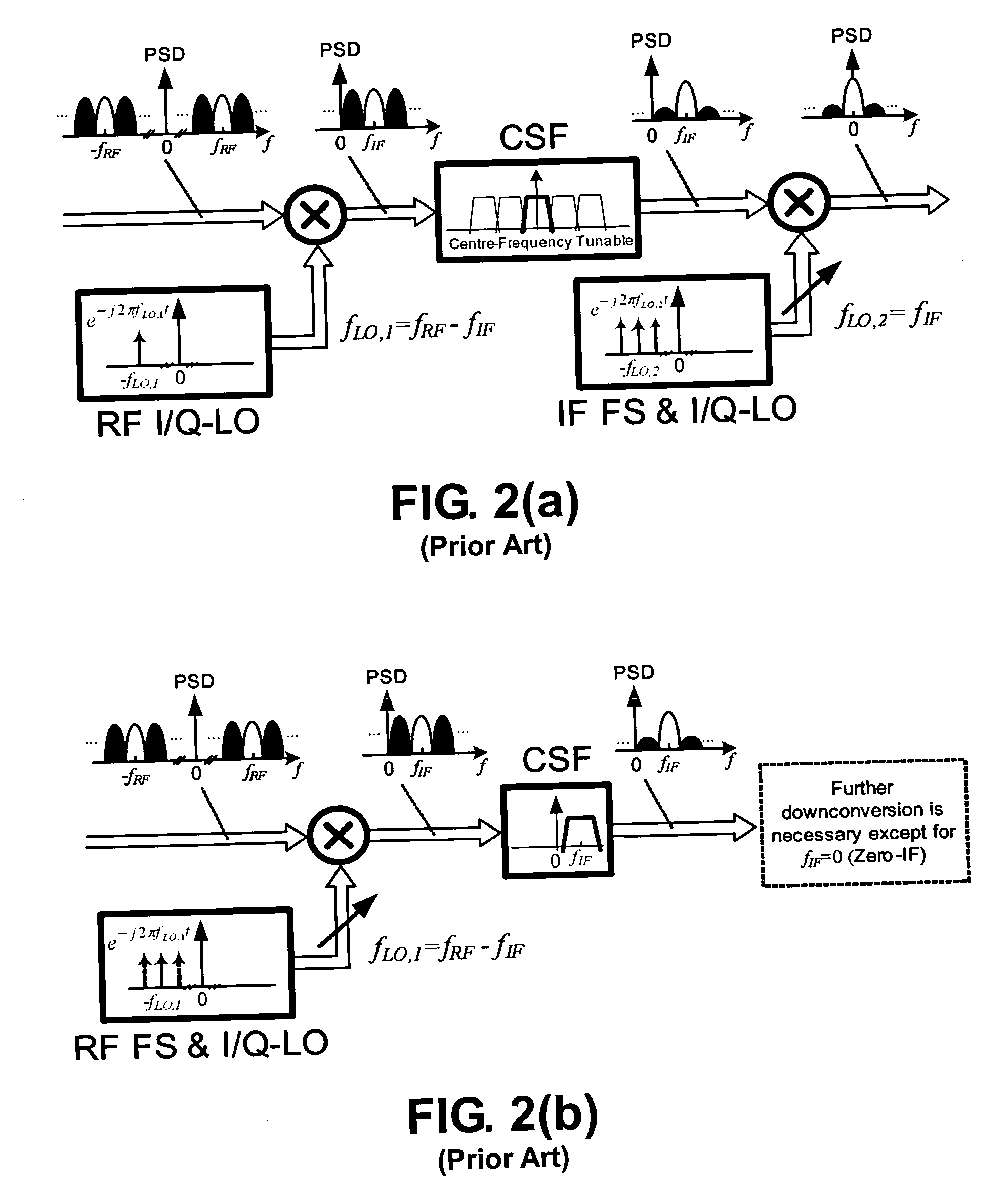Two-step channel selection for wireless receiver and transmitter front-ends
a wireless receiver and transmitter technology, applied in the field of wireless communication circuits and systems, can solve the problems of inability to implement zero-if and low-if implementations, inability to efficiently enlarge the required area, and inability to meet the requirements of applications such as wcdma, and achieve the effect of convenient implementation
- Summary
- Abstract
- Description
- Claims
- Application Information
AI Technical Summary
Benefits of technology
Problems solved by technology
Method used
Image
Examples
Embodiment Construction
[0041] The technique in accordance with the present disclosure uses a partition of the channel selection process between the RF and IF AFEs, such that only a coarse selection is necessary at the RF and a fine selection will be completed at the IF. The key to implementing this technique in an efficient manner is a new concept of image.
[0042] It is well-known that image is an unwanted interference in frequency conversion (either up or down). In image-reject receivers, after quadrature downconversion and based on complex-signal analysis, the desired channel and its first adjacent become the image of each other with the relationship, |fdesired-fimage|=2IF, where fimage and fdesired are the frequencies of the image and the desired channels, respectively. Moreover, they will be located at the same IF but with a complex conjugate representation.
[0043] However, should the IF AFE be able to flexibly select either the desired channel or its image, channel selection could be accomplished wit...
PUM
 Login to View More
Login to View More Abstract
Description
Claims
Application Information
 Login to View More
Login to View More - R&D
- Intellectual Property
- Life Sciences
- Materials
- Tech Scout
- Unparalleled Data Quality
- Higher Quality Content
- 60% Fewer Hallucinations
Browse by: Latest US Patents, China's latest patents, Technical Efficacy Thesaurus, Application Domain, Technology Topic, Popular Technical Reports.
© 2025 PatSnap. All rights reserved.Legal|Privacy policy|Modern Slavery Act Transparency Statement|Sitemap|About US| Contact US: help@patsnap.com



